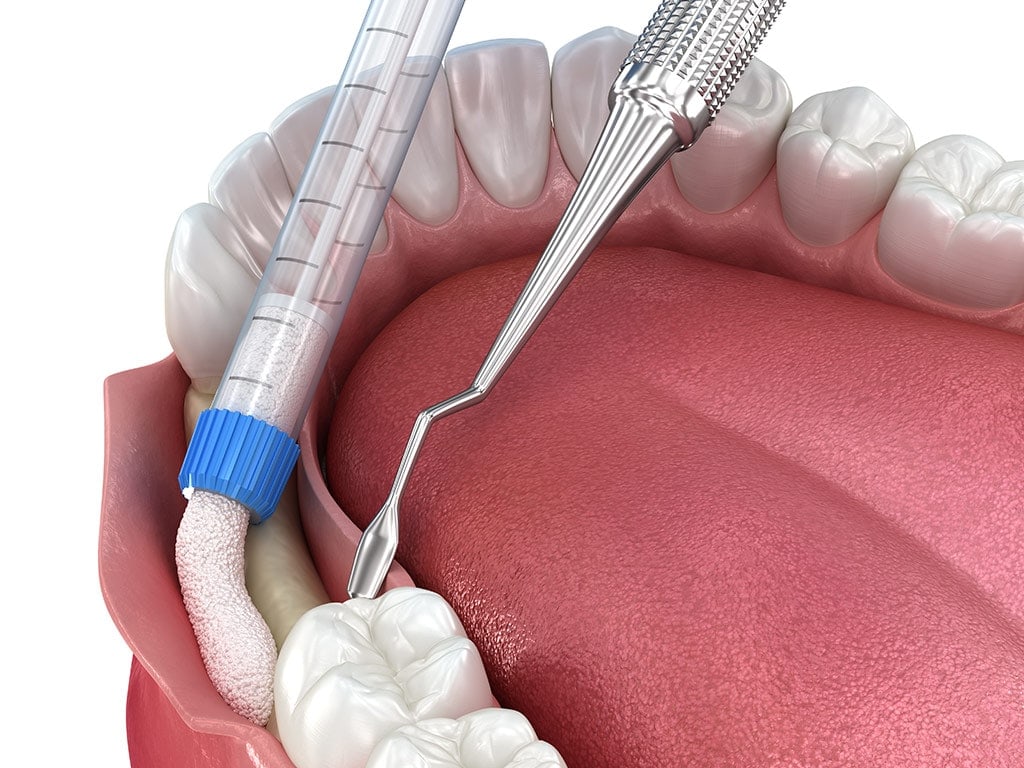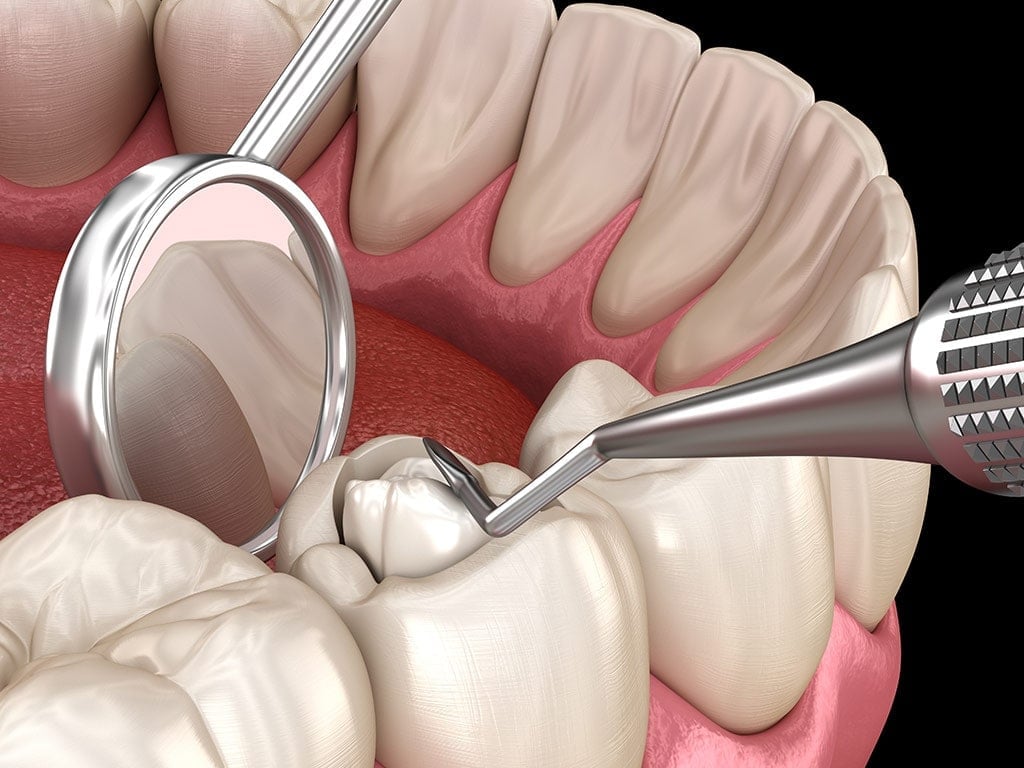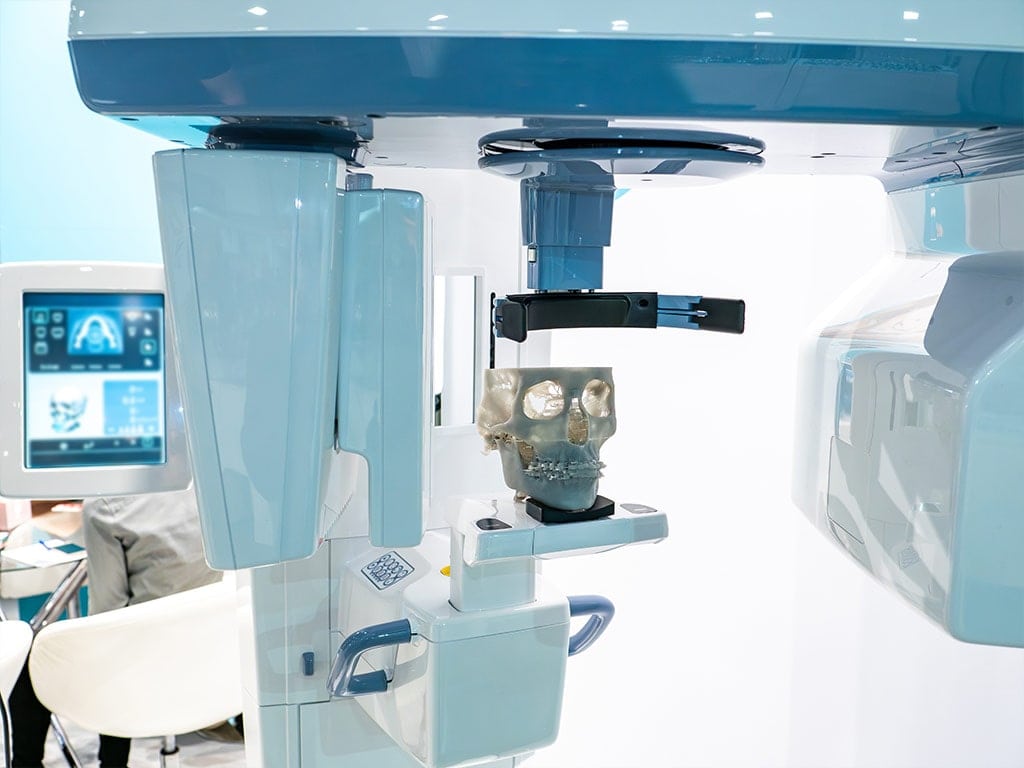Why Get a Bone Graft?
Bone grafts are designed to restore jawbones that sustained damage from diseases like periodontal disease. Jawbones can also be damaged and deteriorate from dental trauma or the decay left behind from missing teeth.

Benefits of Getting a Bone Graft
A bone graft is a restoration procedure that builds back your jawbone to its original shape and form. This can help reduce disease, improve dental function, and allow for the replacement of missing teeth like implants.
Substance Used for a Bone Graft
Three types of substances can be used for bone grafts into your jawbone. The first is where tissue is taken from your body, called autogenous grafting. It can also be purchased from a human tissue bank, called an allograft, or an animal tissue bank, called a xenograft. There is also a manmade substitute that can be used.


Bone Grafts Add Density
One of the best reasons to get a bone graft in your jaw is that it adds density and volume to a weak deteriorated jawbone. This may be a requirement for the dentist to do other procedures such as installing bridges and implants.
Provides Structure for Teeth and Gums
Your jawbone is the foundation for your gums and teeth. Building it up offers a stronger foundation for both. A strong jawbone holds your teeth and gums in place, which prevents dental problems and tooth loss.

Saves Teeth
Bone grafting can solve many dental issues that lead to tooth, gum, and bone loss like infection, tumors, sinus problems, and severe gum disease. Bone grafts help surrounding bone regenerates and that can save your teeth.
Maintaining Facial Structure
Repairing your jawbone can not only maintain but lift facial muscles. This brings back a youthful look with a natural smile as it can stop things like facial sagging and thinning lips.

Four Steps in Installing a Bone Graft
1. Using an Anesthetic
The surgery starts when the dentist administers a local anesthetic to numb the area. This typically involves an injection into the gum. You won’t feel any pain during the procedure but will feel pressure.
2. The Incision
The dentist will then cut an incision that exposes the jawbone. This is how the dentist gets to the area to insert the bone graft. It is a small incision that is typically done from the top of the gum where the missing tooth space is located.


3. Adding the Graft
The dentist will then add the grafting substance to the jawbone. This may take a few minutes as the space is small and the work is intricate. The substance can be surprisingly small but stimulates the bone to grow and add volume.
4. Closing the Incision
The dentist will then stitch up the incision. The stitches will need to be removed after healing in a second follow-up appointment.
Schedule a Bone Grafting Consulation
Bone Grafting Hamilton FAQs
- Autograft: Bone tissue taken from your own body.
- Allograft: Bone tissue sourced from a human donor.
- Xenograft: Bone tissue derived from animals.
- Alloplast: Synthetic bone materials.
The choice depends on your specific needs and the condition of your jawbone.
- Monday to Friday: 7 am – 9 pm
- Saturday and Sunday: 8 am – 6 pm
These extended hours accommodate patients’ schedules.